Let’s assume that you’re completing a solid career, have earned a good income and through thrift and discipline, accumulated a significant nest egg for retirement. Sounds good so far, right? But as you approach retirement, the thought may occur to you: “I don’t really know how to convert this nest egg into retirement income when I stop working”.
Well, you’re not alone. In our experience, there is a fair amount of angst that accompanies this much anticipated life event, and for good reason. Compared to the working years, there are many unique moving parts and complexities to consider in retirement that most individuals have never had to think about.
Building wealth while earning a healthy income is pretty one dimensional. For most individuals, it’s about setting aside regular long term savings and investments in the most tax effective manner possible. With relatively high marginal tax brackets, individuals tend to build their retirement nest eggs with pretax contributions first; usually through contributions to an employer’s retirement plan. They may also receive a pretax employer match or profit sharing contribution. With surplus savings beyond the limits of pretax 401k or 403b plans, they then fill up ROTH accounts, if eligible, and after-tax brokerage accounts. Likewise, there may be opportunities to acquire real estate and business ownership interests.
The savvy investor continues their disciplined investment patterns in down markets and takes advantage of lower-priced shares. During the wealth accumulation period, there is a sense of being on automatic pilot.
But in retirement, the emphasis shifts from wealth accumulation to distribution. No one knows exactly how long retirement will last; and if the nest egg runs low, the opportunity to earn income to replace it may be long gone. Financial security now hinges on proactively managing a unique set of interrelated retirement income variables in the most efficient manner possible.
While every situation is unique, here is a quick overview of some important steps and the moving parts to manage:
Create clarity: Make a model
Here is an interesting analogy. With good technology, an architect can create a three dimensional model of your dream house. You can “see” the future finished product and, just as importantly, with the click of the mouse you can make changes and compare the effects.
You can do the same with your retirement planning.
So much of retirement anxiety stems from uncertainty. We struggle to “see” how all the moving parts come together to create sustainable cash flow when there is no pay check. With today’s technology tools, you can create a sophisticated model, based upon reasonable assumptions, which will illustrate every aspect of your cash flow year by year over your entire lifetime.
Use this modeling to create a benchmark estimate of how much income you may safely distribute each year. Then, use the model to compare the effects of different financial strategies designed to improve the efficiency of your retirement planning. The difference between a reasonable plan and an optimal plan can be startling when tracked over an entire retirement period.
Creating your vision of retirement: Of course, to create a mathematical model of retirement, you must quantify the costs of the unique retirement you want to experience. The model will total all of these costs to determine how much income is needed in each year to support your desired lifestyle. For example, a common retirement objective is to travel more. But to be useful, this must be quantified too: “Budget $15,000 per year for travel from age 65 to 85,” for example.
Common retirement objectives to define are household expenses, travel, hobbies, entertainment, current gifts or estate bequests to charities or heirs, and out of pocket health costs.
Planning Variables and Strategies
Here is a partial listing of the moving parts that combine to impact the efficiency of your retirement income distribution plan:
Inflation Rate Assumption
Investment Portfolio Rate of Return Assumption – Investment volatility now becomes very significant because distributions must take place even in down markets. There is a science to investing for total return to outpace inflation while matching safe cash reserves with the need for income.
Pensions
Social Security Benefit Claiming Strategy – What is the optimal strategy for your unique circumstances?
Retirement date and part-time earned income in retirement – Is a total retirement from earning income right for you? Or is a gradual transition healthier to mind, body and soul, as well as more fiscally prudent?
Marginal Tax Brackets -Tax planning in retirement tends to be much more complex and offers the greatest opportunities for efficiency. You will want to take retirement income from the most efficient source each year and tax is often the driver! It’s important to distinguish between ordinary income and capital gains income as they have different marginal tax rates. Likewise, it’s important to remember that spouses rarely pass away at the same time and the survivor will be a single tax payer one day. Sometimes, it may be advantageous to defer taxable income to future years and sometimes the opposite is true (not to mention which assets to pass to heirs). Don’t forget the Medicare IRMAA (Income Related Monthly Adjustment Amount) surcharges for high-income retirees. And because they are interrelated, changing one variable may affect the tax treatment of all the others. This is where the modeling comes in handy.
Required Minimum Distributions – Our tax code requires the distribution of pretax retirement accounts according to an age-based minimum schedule that commences at age 70.5. All distributions from these accounts are treated as ordinary income, which has the highest marginal tax rates. For individuals with large pretax balances, the opportunities for tax planning efficiencies are greatest prior to age 70.5.
Tax “Buckets”– In addition to pretax retirement accounts, individuals may have accumulated funds in after-tax brokerage and cash accounts, ROTH Accounts, and Health Savings Accounts (HSAs). Each tax bucket provides different tax treatment of distributions (ranging from tax-free to capital gains to ordinary income) and with good planning, each has the ability to reduce taxation significantly in the years prior to age 70.5. This in turn creates opportunities for ROTH conversions and optimal timing for the sale of real estate or business interests.
Similarly, your investments should be located in the right tax bucket. The investments with the greatest potential for return belong in the buckets with the most efficient tax treatment.
One more thing
There is one last challenge to consider. Your retirement will continue over many decades. In fact, some folks may be retired longer than they were working. Your future will include life events that you simply cannot anticipate now and the tax, legal, and financial landscape will continue to change regularly. It’s critical to stay on top of the changes, chart your progress, and systematically modify your strategies.
While it is possible to manage this process yourself, given the complexity and potential consequences, it may make sense to consult with a knowledgeable and experienced wealth management firm — someone with the expertise, resources and the team depth to assist you over a long and secure retirement.
Winfred Jacob, CFP®
Senior Financial Advisor


